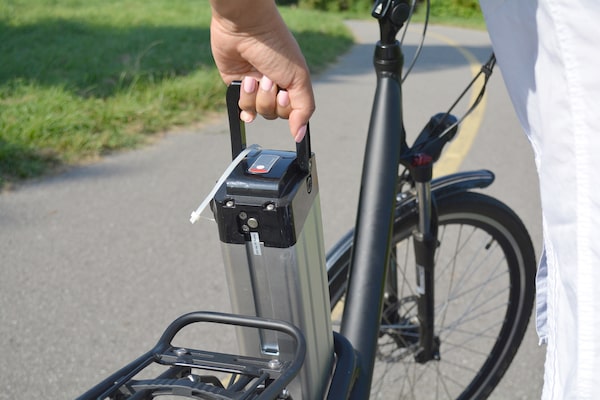
tigerstrawberry/iStockPhoto / Getty Images
I don’t get the point of e-bikes. I keep hearing that they’re the future of transportation, but they seem like expensive bikes for lazy people. Aren’t they basically just mopeds? Isn’t the point of cycling to get some exercise? – Burt, Calgary
That E in e-bike is for “electric.” But, if you want to just get to work without being drenched in sweat, it could also stand for “easier.”
“Calgary is a pretty hilly city, so they’re helpful for elderly riders or people who don’t necessarily identify as cyclists but who just want to get around in their normal lives,” says Gary Millard, president of Bike Calgary, a non-profit that promoted cycling in the city. “If you drive to the grocery store to get your groceries, are you a motorist?”
There are essentially three types of e-bikes: Class 1, Class 2 and Class 3.
All three classes have pedals, but Class 1 bikes are bikes that you have to pedal at all times. You can set them to give you a boost or turn it off entirely.
Power assist speeds are typically electronically limited, so software won’t let the bike go above a certain speed on battery power. Usually, that’s a maximum of 32 km/h, although Calgary’s shared Lime bikes are limited to 23 km/h, Millard says.
“Effectively, what that means is that if you want to go faster, you have to do the pedalling yourself,” Millard says, adding that even the top speed is less than the 35 or 45 km/h that a “strong rider” could do on a regular bike.
Class 2 bikes travel similar speeds to class ones, but like a motorcycle, have a throttle that allows you to use the motor without pedalling. Class 3 bikes also have a throttle, but are allowed to travel up to 45 km/h.
“They tend to be popular with baby boomers,” says Court Rye, who runs Vancouver-based review site ElectricBikeReview.com. “The majority in Europe are Class 1 because it’s more cycling friendly, while in China they use the throttle more and in Canada and the U.S., [manufacturers] seem to be doing both.”
All three classes of bike can be charged by plugging it in or taking out the battery to charge separately, and you’ll get roughly 30-60 km on a charge. You can also expect e-bikes to be heavier by about 15-20 pounds, and they can also get pricey.
“There are electric bikes that can be built for as little as $600 – you basically swap out your wheel for an electric one,” Rye says. “For purpose-built e-bikes, you’re looking at least $1,000 – and they can go up to $15,000 and maybe even beyond.”
Great equalizer?
E-bikes aren’t competition for regular bikes. They’re typically allowed in bike lanes alongside normal bikes and they allow people to go on longer trips, says Jared Kolb, executive director of pro-cycling non-profit Cycle Toronto.
“They service the market for the 10-to-12-kilometre trip, where a conventional bicycle services six kilometres and below,” Kolb says. “It helps expand the overall mix of people who are interested in sustainable transportation.”
It would also appear that interest is growing. In a survey commissioned by Japanese bike maker Shimano, 25 per cent of Europeans said they’d be willing to commute to work on an e-bike. In the Netherlands, nearly half of people said they’d choose an e-bike.
“I’d call e-bikes the great equalizer,” says Rye, who first started riding an e-bike while recovering from a knee injury. “If you have asthma, or if you’re riding with a partner who’s more fit, you can keep up.”
The popularity of electric bikes has soared as people look for a cheap way to commute in busy cities. Matt Bubbers explores e-bikes as a transport option, and what you need to know about sharing the road when riding one.
Have a driving question? Send it to globedrive@globeandmail.com. Canada’s a big place, so let us know where you are so we can find the answer for your city and province.
Stay on top of all our Drive stories. We have a Drive newsletter covering car reviews, innovative new cars and the ups and downs of everyday driving. Sign up today.